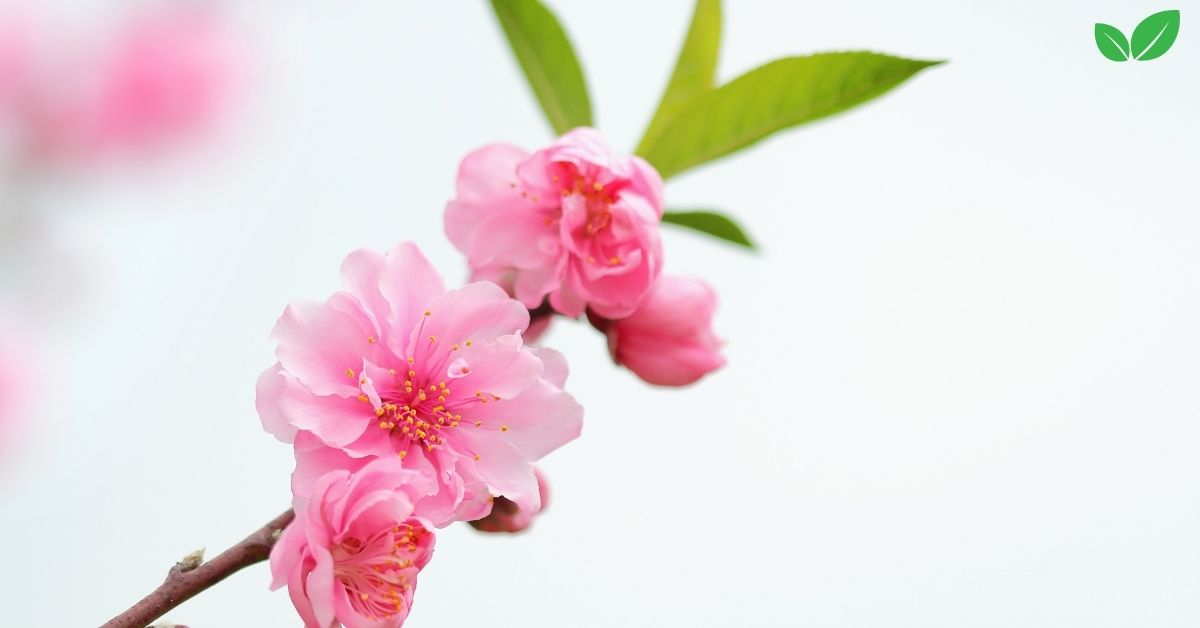Cherry plum (Prunus cerasifera), a small deciduous tree or shrub, is cherished for its early-spring blooms, colorful foliage, and small, edible fruits. Native to the regions of southeastern Europe and western Asia, cherry plum has been widely naturalized across temperate regions of the world, where it thrives in a variety of climates and contributes to ecosystem health. Known for its adaptability and ecological benefits, cherry plum plays significant roles in biodiversity support, pollination networks, and as a source of food for wildlife and humans alike.
This article delves into the environmental niche of cherry plum Prunus cerasifera, exploring its natural habitat, ecological roles, interactions with other species, and contributions to ecosystem health. We will also discuss the challenges and conservation considerations for maintaining its role in both natural and cultivated landscapes.
Overview of Cherry Plum Prunus cerasifera: Characteristics and Habitat
Cherry plum belongs to the Prunus genus, which includes several other popular fruit-bearing trees, such as cherries, plums, apricots, and almonds. Known for its beautiful, fragrant blossoms and small, flavorful fruit, cherry plum is a resilient species that can thrive in various climates, soil types, and environmental conditions. Due to its early spring flowering, it’s often one of the first trees to bloom, marking the start of the growing season and providing an essential food source for pollinators emerging from winter dormancy.
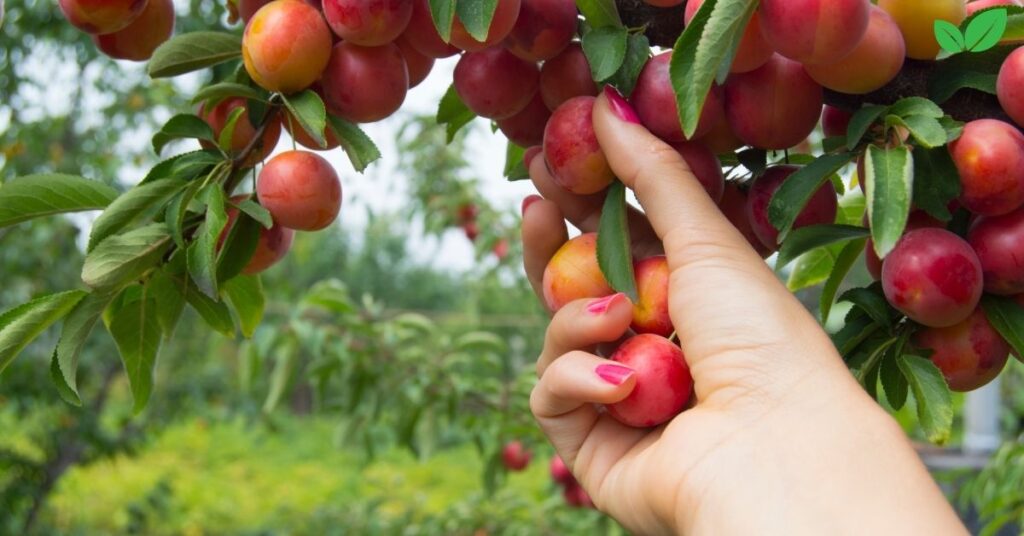
1. Physical Characteristics
Cherry plum Prunus cerasifera is a small to medium-sized deciduous tree that typically grows between 15 to 30 feet tall, with a spread of up to 20 feet. Its bark is smooth and grayish-brown, often developing furrows as the tree matures. The leaves are ovate with serrated edges, and depending on the cultivar, they range from green to a deep reddish-purple, adding vibrant color to landscapes.
The tree produces single or small clusters of white to pinkish flowers in early spring, even before the leaves have emerged. These fragrant blooms are a magnet for bees and other pollinators, making cherry plum a valuable resource in early spring. The fruit that follows is small, round, and typically red, yellow, or purple, with a tart-sweet flavor. These fruits are edible and enjoyed by both wildlife and humans.
2. Native Range and Distribution
Cherry plum Prunus cerasifera is native to southeastern Europe and parts of Asia, particularly in regions with temperate climates. Over time, it has been introduced and naturalized in many parts of Europe, North America, and Australasia, where it has adapted to a wide range of environmental conditions. Its adaptability to various soil types and tolerance for drought, cold, and occasional flooding has allowed it to thrive in both wild and urban settings.
In natural landscapes, cherry plum can be found along forest edges, in scrublands, and on hillsides, often as part of mixed deciduous forests. In urban areas, it is commonly used as an ornamental tree for its beautiful flowers and foliage. Its hardiness and resilience make it a popular choice for gardens, parks, and along streetscapes.
Adaptations of Cherry Plum Prunus cerasifera to Its Environment
Cherry plum exhibits several adaptations that allow it to thrive across diverse habitats and environmental conditions. These adaptations include its early flowering, tolerance for varying soil conditions, and ability to thrive in both wild and cultivated settings.
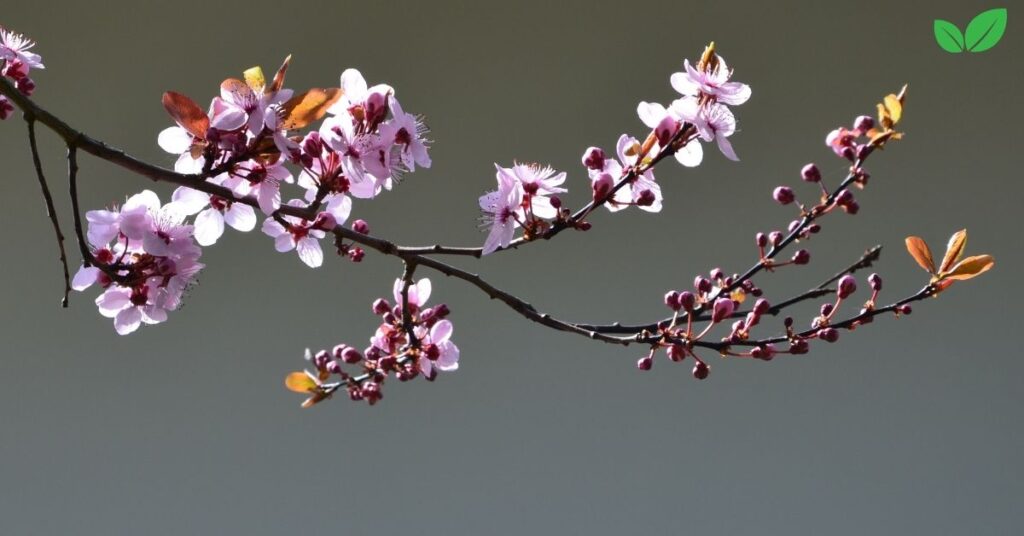
1. Early Flowering and Pollinator Support
One of the most notable adaptations of cherry plum is its early flowering, which typically occurs in late winter or early spring. Flowering before the leaves emerge allows the blossoms to receive maximum sunlight and ensures that they are visible to pollinators. Early flowering also helps the tree attract pollinators when few other flowers are available, providing an essential food source for bees and other insects at a critical time.
The tree’s abundant pollen and nectar attract a variety of pollinators, including honeybees, native bees, butterflies, and hoverflies. This early resource contributes to the survival and reproductive success of pollinator populations, which play essential roles in pollinating other plants in the ecosystem.
2. Tolerance for Various Soil and Climate Conditions
Cherry plum is highly adaptable to different soil types, including sandy, loamy, and clay soils, as long as they are well-drained. This adaptability allows it to grow in a variety of habitats, from rocky hillsides to fertile lowlands. The tree is also drought-tolerant, making it resilient in dry climates, though it performs best with moderate moisture.
In addition to its soil adaptability, cherry plum is tolerant of cold and can survive winter temperatures typical of temperate climates. Its hardiness zone range extends from USDA zones 4 to 8, allowing it to thrive in both cold and mild climates. This resilience makes it a suitable species for a wide range of landscapes and climates.
3. Rapid Growth and Vegetative Reproduction
Cherry plum Prunus cerasifera grows relatively quickly compared to other fruit trees, reaching maturity within a few years. This rapid growth allows it to establish itself in a variety of habitats, providing ground cover, shade, and food sources for wildlife. The tree can also reproduce vegetatively through root suckers, which form new shoots that can develop into separate trees. This trait allows cherry plum to form dense thickets, creating habitats that support various wildlife species.
In some regions, the ability to reproduce vegetatively allows cherry plum to spread and establish naturalized populations, where it can compete with other vegetation. This characteristic makes it an effective colonizer in disturbed areas, where it can stabilize soils and reduce erosion.
Ecological Roles and Benefits of Cherry Plum in Ecosystems
Cherry plum contributes to ecosystem health by supporting biodiversity, promoting pollinator populations, and providing food and shelter for wildlife. Its roles in nutrient cycling, soil stability, and habitat creation make it a valuable component of both wild and cultivated landscapes.
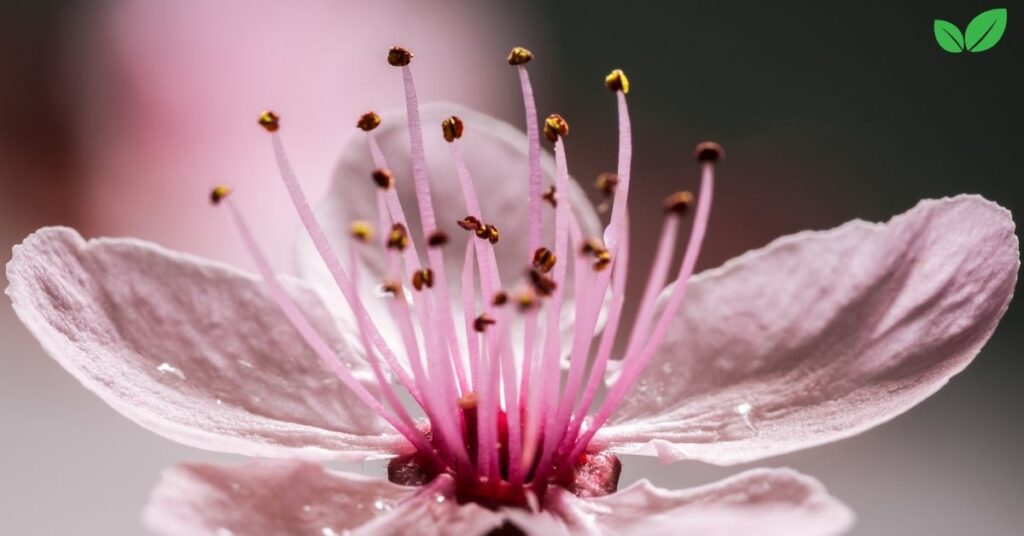
1. Supporting Pollinators and Biodiversity
As one of the earliest flowering trees, cherry plum provides essential nectar and pollen for pollinators emerging from winter dormancy. Its flowers attract a wide range of insects, including honeybees, native bees, and butterflies, which rely on the tree’s blooms for sustenance in early spring. By supporting pollinators, cherry plum contributes to the health of the ecosystem, as pollinators facilitate the reproduction of numerous plants.
In addition to supporting pollinators, cherry plum’s fruit serves as a food source for various bird species, small mammals, and insects. This availability of food supports local biodiversity, providing sustenance for species that depend on fruit and seeds as part of their diet. The tree’s presence in an ecosystem contributes to complex food webs, where it supports both herbivores and, indirectly, the predators that rely on them.
2. Soil Stabilization and Erosion Control
Cherry plum’s dense root system helps stabilize soil and prevent erosion, particularly on slopes and in disturbed areas. Its ability to grow in various soil types and climates makes it a suitable choice for soil conservation projects and land reclamation efforts. By anchoring the soil, cherry plum reduces sediment runoff into nearby waterways, benefiting water quality and aquatic ecosystems.
The tree’s ability to form dense thickets through vegetative reproduction enhances its soil-stabilizing properties. In areas where natural vegetation has been removed or disturbed, cherry plum can quickly establish itself, providing ground cover and reducing the risk of erosion. This role in soil conservation contributes to ecosystem stability and supports sustainable land management practices.
3. Habitat and Shelter for Wildlife
Cherry plum Prunus cerasifera provides habitat and shelter for a variety of wildlife species. Its dense foliage offers cover from predators, while its branches provide nesting sites for birds. In early spring, the blossoms attract insects that serve as food for insectivorous birds, contributing to a balanced ecosystem.
The fruit produced by cherry plum is also a valuable food source for wildlife, including birds, squirrels, and small mammals. The availability of fruit in summer supports the diets of these animals, particularly during times when other food sources may be limited. By providing habitat, food, and shelter, cherry plum enhances local biodiversity and supports species that rely on tree cover and fruit-bearing plants.
Interactions of Cherry Plum with Other Species
Cherry plum interacts with various species in its ecosystem, forming mutualistic, competitive, and predatory-prey relationships. These interactions highlight the tree’s interconnectedness with other organisms and its contributions to ecosystem health.
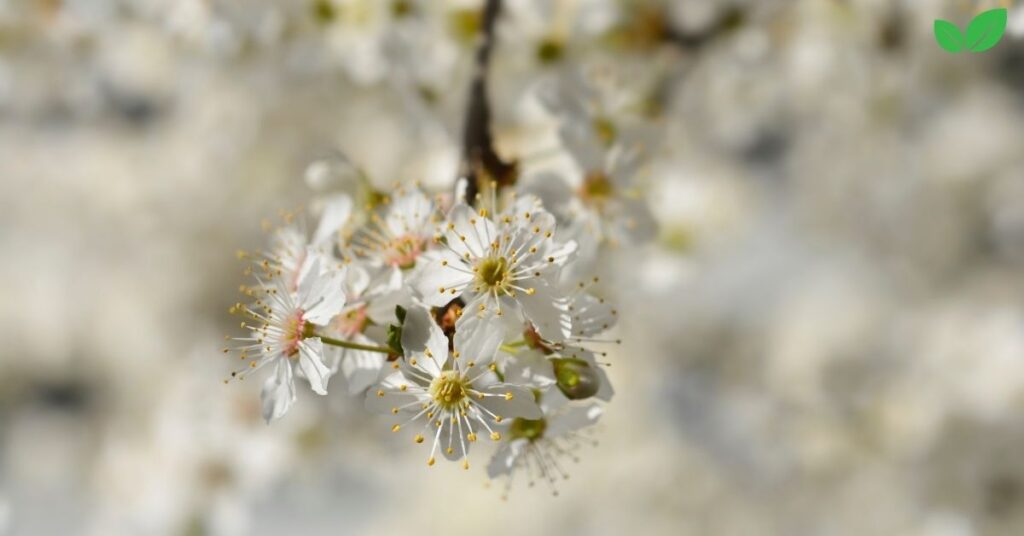
1. Mutualistic Relationships with Pollinators and Seed Dispersers
Cherry plum’s mutualistic relationship with pollinators is essential for its reproductive success and the health of the surrounding ecosystem. Pollinators benefit from the tree’s early-season blooms, while the tree relies on them to transfer pollen and produce fruit. This mutually beneficial relationship supports both cherry plum’s reproduction and the survival of pollinator populations.
Additionally, the tree has a mutualistic relationship with seed dispersers, such as birds and mammals that consume its fruit. These animals help disperse the seeds to new locations, allowing cherry plum to establish new populations and expand its range. Seed dispersal contributes to genetic diversity within cherry plum populations and enhances ecosystem resilience.
2. Competition with Other Vegetation
Cherry plum Prunus cerasifera competes with other trees, shrubs, and groundcover plants for resources such as sunlight, water, and nutrients. Its ability to grow in dense thickets allows it to establish dominance in certain areas, especially in disturbed habitats where other vegetation may struggle to thrive. In some regions, cherry plum’s competitive growth can limit the establishment of native species, particularly in ecosystems where it has been introduced.
While cherry plum’s competition can impact native vegetation, it also contributes to the formation of diverse plant communities. In naturalized landscapes, its presence creates a mosaic of vegetation types that support various wildlife species and contribute to ecological diversity.
3. Role in Supporting Insect Populations
Cherry plum serves as a host plant for various insect species, including caterpillars, aphids, and other herbivorous insects. These insects, in turn, attract insectivorous birds, creating a food chain that supports both plant and animal populations. By providing food for insect populations, cherry plum supports biodiversity and promotes ecological balance within its habitat.
This role as a food source for insects also contributes to the tree’s role in supporting pollinators, as some pollinating insects, like bees, are also attracted to the presence of other insects in the area. In this way, cherry plum indirectly supports a range of species that rely on a balanced ecosystem for survival.
Conservation Challenges and Considerations for Cherry Plum
Despite its resilience, cherry plum Prunus cerasifera faces several conservation challenges, including habitat loss, climate change, and competition with invasive species. These challenges can impact its populations and the ecosystems that rely on its presence.
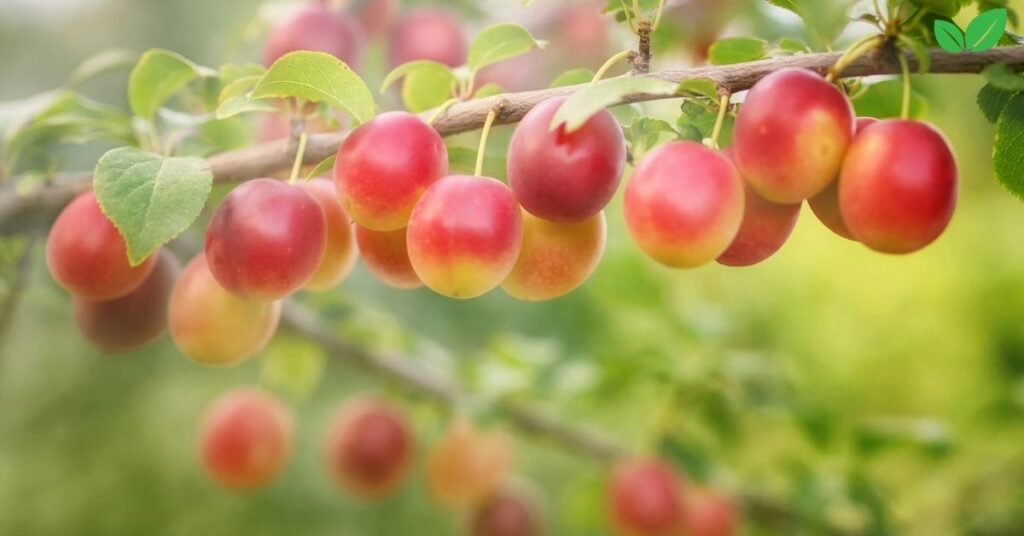
1. Habitat Loss and Urbanization
Urbanization and agricultural expansion have led to the loss of natural habitats for cherry plum, particularly in regions where native populations exist. As landscapes are developed, the natural habitats where cherry plum thrives are often reduced, limiting the tree’s range and reducing the availability of food and shelter for wildlife.
Conservation efforts aimed at preserving and restoring natural habitats are essential for maintaining cherry plum populations. By protecting forests, grasslands, and riparian zones, we can support the health and resilience of ecosystems that rely on cherry plum as a food source and habitat.
2. Climate Change and Environmental Stress
Climate change presents challenges for cherry plum, as shifting temperatures and rainfall patterns affect its growth, flowering, and fruiting. Extreme weather events, such as droughts and floods, can impact the tree’s ability to produce fruit and support pollinator populations. These changes may also affect the timing of its flowering, potentially disrupting interactions with pollinators.
To mitigate the impacts of climate change, conservation practices that promote biodiversity and habitat resilience are essential. By fostering diverse plant communities, we can help cherry plum and other species adapt to changing environmental conditions.
3. Competition with Invasive Species
In some regions where cherry plum Prunus cerasifera has been introduced, it faces competition with invasive species that can outcompete it for resources. Conversely, cherry plum itself can become invasive in certain areas, spreading rapidly and impacting native vegetation. Effective management practices are needed to balance the benefits of cherry plum with the preservation of native plant communities.
In naturalized areas, responsible planting and monitoring of cherry plum populations are important for minimizing its impact on native species. By ensuring that cherry plum does not outcompete local vegetation, we can support healthy, diverse ecosystems that benefit a wide range of species.
Conclusion
Cherry plum Prunus cerasifera is a resilient and adaptable tree that plays an important role in both natural and cultivated landscapes. Its early flowering, ability to support pollinators, and contribution to biodiversity make it a valuable component of temperate ecosystems. By providing food, shelter, and habitat for wildlife, cherry plum enhances ecosystem health and supports ecological balance.
Despite its adaptability, cherry plum Prunus cerasifera faces conservation challenges, including habitat loss, climate change, and competition with invasive species. Protecting its natural habitats, fostering biodiversity, and implementing responsible management practices are essential for maintaining cherry plum’s ecological contributions. By understanding and conserving cherry plum, we contribute to the resilience and sustainability of ecosystems that benefit both wildlife and humans.
FAQs
1. What are the main ecological benefits of cherry plum?
Cherry plum supports pollinators, provides food for wildlife, stabilizes soil, and contributes to biodiversity in temperate ecosystems.
2. Where is cherry plum naturally found?
Cherry plum is native to southeastern Europe and parts of Asia but has been naturalized in temperate regions worldwide.
3. How does cherry plum support pollinators?
Its early-spring blooms attract pollinators, providing essential nectar and pollen for bees and insects emerging from winter dormancy.
4. What threats does cherry plum face?
Threats include habitat loss, climate change, and competition with invasive species, all of which impact its populations and habitats.
5. Can cherry plum become invasive?
Yes, in certain regions, cherry plum can spread quickly and compete with native species, requiring responsible management to control its impact.
6. How does cherry plum contribute to soil health?
Cherry plum’s root system stabilizes soil and reduces erosion, particularly on slopes and in disturbed areas, benefiting ecosystem stability.
Read More: Phacelia Tanacetifolia: Exploring Its Environmental Niche and Ecological Importance

